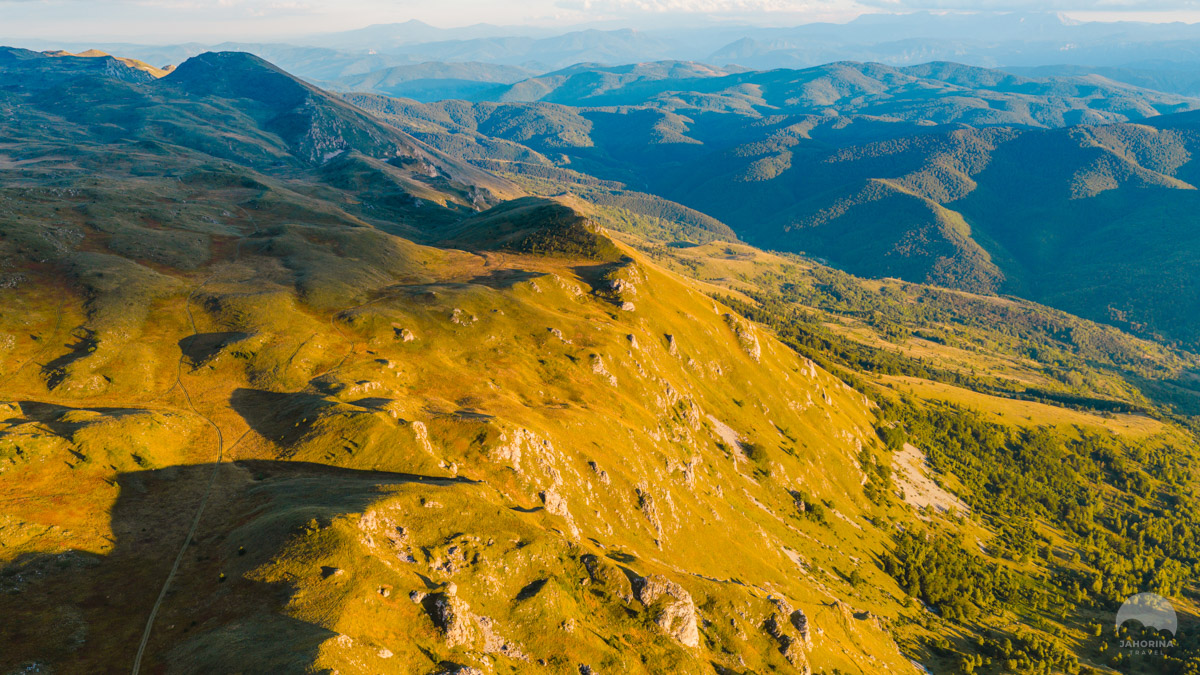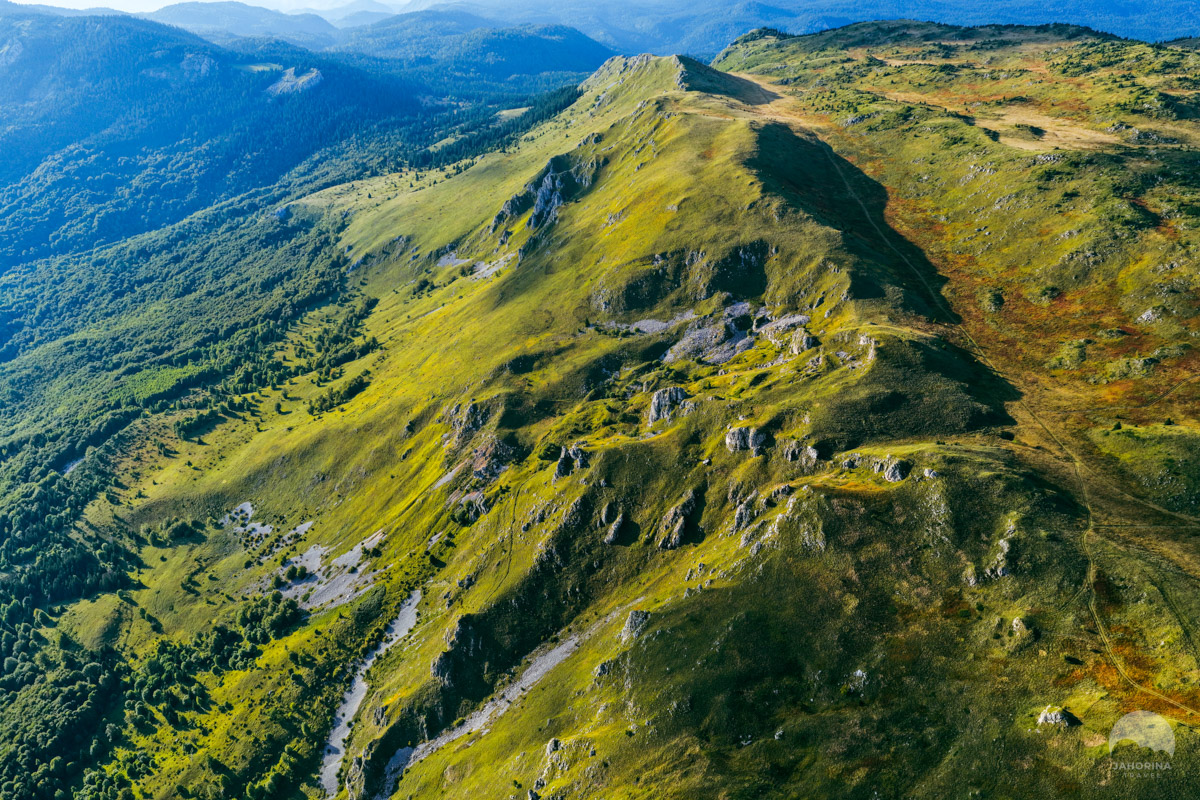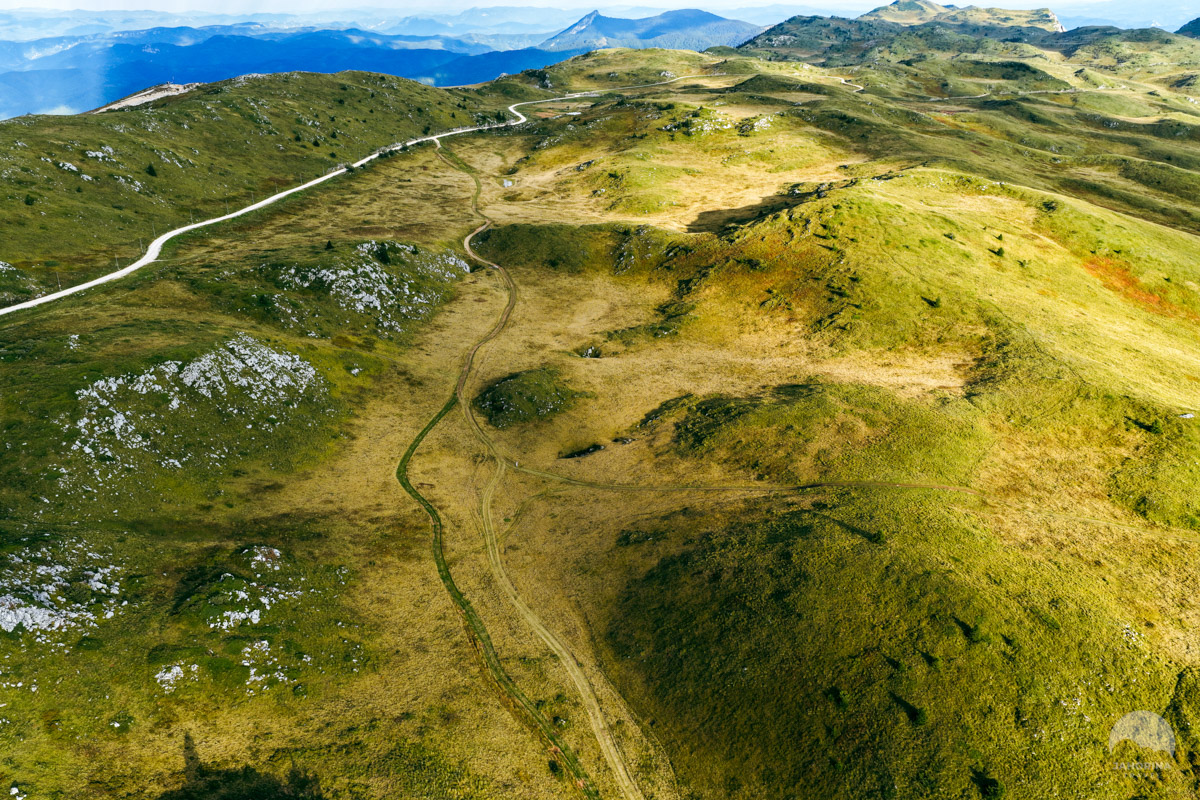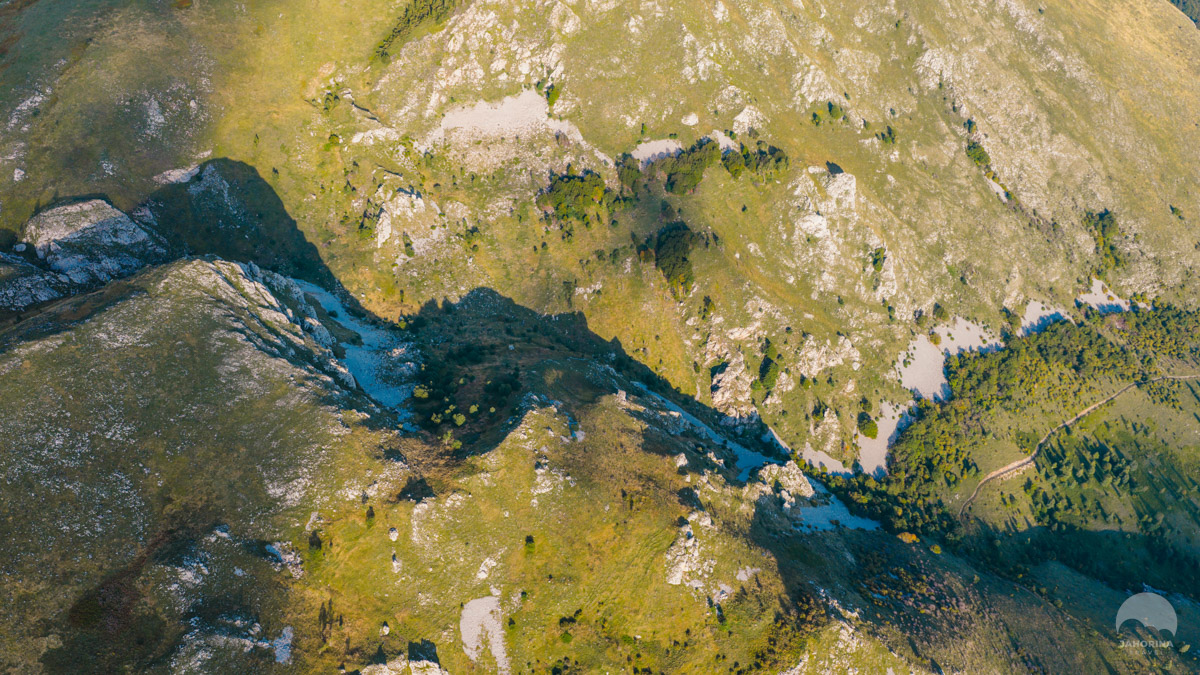If you wonder what makes Jahorina special compared to other mountains in the Balkans, the answer is – Bare Jahorina. It is not just a name, but also the image of one of the most imposing mountain plateaus of Bosnia and Herzegovina, where the forest ends and the view opens to grassy expanses and snowy slopes that turn green in summer and are buried under snow up to one meter deep in winter.
Bare Jahorina stretches for about 15 kilometers in length and 4 to 5 kilometers in width. It represents the central massif of Jahorina. For centuries, this vast plateau has been recognized for its unique landscape and the living conditions it offers – lush pastures in summer and endless snow-covered terrain in winter. Precisely for this reason, Bare Jahorina was celebrated in a folk song:
“So vast is Jahorina mountain, A gray falcon cannot fly across it. Let alone a brave knight on horseback.”
Bare Jahorina is not only a plateau but also a chain of peaks surrounding it. The highest among them is Kraljičino Guvno at 1,913 meters above sea level. There are also Košuta (1909 m), Lokvanjsko Brdo or Klekovo Brdo (1913 m), Trijeska (1806 m), and the well-known Ogorjelica, which modern measurements identify as the highest peak of Jahorina at 1916 meters.
The rock composition of Jahorina bears witness to ancient times when geological epochs succeeded one another. At the base are Paleozoic layers: Werfen sandstones, quartzite, and red sandstones. Over them lie Triassic limestones and dolomites, which shaped the surface of the plateau and its ridges. Thanks to this composition, Jahorina abounds in sinkholes, depressions, and springs that appear at the junctions of different rock layers.
This combination of rocks is the reason why Jahorina has numerous springs of drinking water, as well as underground flows – water seeps into the ground and then reemerges as springs. Thus are formed streams and rivers that flow toward the Bosna on one side, or toward the Drina on the other. Among the best-known springs on the edge of Jahorina are Vukelina Voda, Leletovo Vrelo, Godijevo Vrelo, and the sources of the Bistrica and Prača, whose waters today supply Pale and Sarajevo.
What makes Bare Jahorina special are not only its peaks and geology but also the people who have lived alongside the mountain for centuries. Shepherds from surrounding villages – Vrhpraca and Crna Rijeka – drove their sheep and cattle to summer pastures. The grass there was lush and rich in medicinal herbs, and they built small huts – shepherds’ cabins. Made of logs, they were so small that only the shepherd could crawl inside. In winter, the huts would vanish under snowdrifts, while in summer they served as shelter from wind and rain. Many villagers let their cattle graze without constant supervision, checking on them only once a week to bring salt.
Today, those huts no longer exist, but stories about them still live on in the memories of the elderly and in books that record the mountain’s past.
Bare Jahorina bears its name because above about 1700 meters the forest ceases. While the lower parts of Jahorina are covered with dense forests of beech, fir, and spruce, the plateau remains grassy. In the past, groups of maple trees also grew at these altitudes. A particularly rare and today almost vanished tree is the Greek maple, which here reached the northern edge of its distribution. Today it can be seen only very rarely, while grassy surfaces dominate the entire plateau.
The vegetation, however, is rich – blueberries, raspberries, blackberries, strawberries, and various medicinal plants spread across the plateau, and among them grows the rare small alpine violet (Viola biflora). It is precisely this diversity of plant life that makes Bare Jahorina a place that fascinates botanists, mountaineers, and all nature lovers.
Because of its beauty and imposing appearance, Bare Jahorina still inspires awe. From its heights, views unfold that take your breath away, and each of its peaks tells a story millions of years long – the story of a mountain shaped through geological epochs, which people turned into a place of pastures, skiing, and legends.







0 Comment